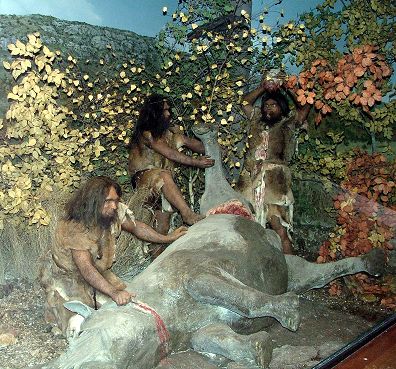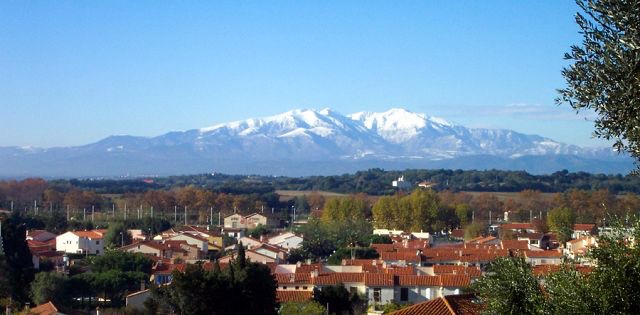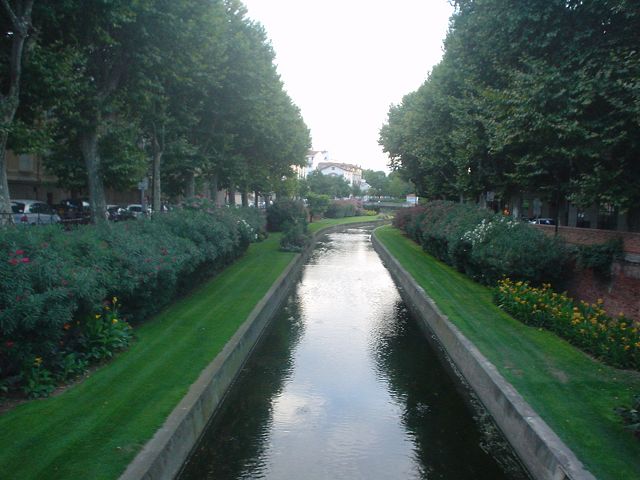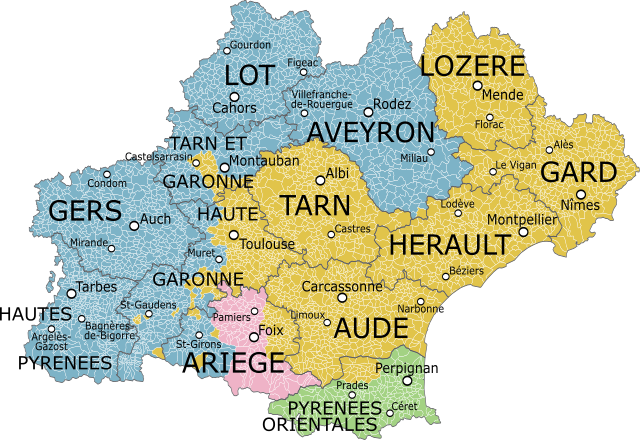A potted history of the naming of the region and its towns and villages
What’s in a name?
It is only by knowing a little about the history of the region that we can appreciate where many of the towns and villages of the Pyrénées Orientales got their names.
Architectural digs around Millas and Le Boulou have found tools dating back about a million years, proving that a population of ‘homo erectus’ existed so far back.
The 450,000 year old Tautavel man is probably the most famous historical discovery in the region. He was dug up in a cave, la Caune d’Arago, near the pretty village of Tautavel – in good condition considering his age!

Mining of copper and bronze became one of the Catalan trademarks round about 2,500 BC with iron following about a thousand years later. Civilisation was becoming more ‘civilised’ and the first towns Ruscino (now known as Chateau Roussillon) and Illeberis (now known as Elne) were built.
It was in fact in Elne, much later, that Hannibal negotiated a safe passage for his men and 40 elephants across the Panissars Pass or the Perthus.

In the fifth century BC, the Sordes lived in the plain (Sorède) and the Cérètes lived on the Cerdagne plateau in the Vallespir (Céret)
In 462 AD the Visigoth king Théodoric ll named the regions of Lanquedoc and Roussillon Septimania. The Visigoths remained in the Roussillon for nearly three centuries and introduced Christianity to the region, strengthening the church and increasing its power.
Catholicism actually came much later. In 778 AD, groups of religious figures, nobles and intellectuals started to arrive in the region, attracted by the policy of tolerance and often escaping persecution in other parts of Europe. It was at this point that several abbeys and monasteries were founded.
Saint-André-de-Vallespir, Saint-André-de Sureda (Sorède), Arles-sur-Tech and Saint-Michel-de-Cuixa.
In the 9th century, the powerful ‘Order of the Knights Templar‘ (if you’ve read Da Vinci Code by Dan Brown this should ring a bell) set up very productive agricultural zones from their headquarters in the Mas Deu in Trouillas and the Roussillon counts and nobles settled in Perpignan although the town was only named Perpinyà in 1197 by Pierre ll (nicknamed ‘the Catholic’).

In 1172, The last of the independent Roussillon counts, Girart ll, sick and tired of the continuous strife and bickering in his family, left all his land, including Roussillon, to his rival, Alphonse l, Count of Barcelona and Aragon. The Counts of Aragon later acquired the title of King of Majorca and based themselves at the castle in Perpignan.
Relations between Catalonia and Castile worsened and the Pyrénées-Orientales was caught up in a constant tug of war.
When France and Spain declared war upon each other in 1635, the Catalans rose up against the Castilian crown. Following the uprising of the ‘ Segadors ‘ (reapers or harvesters) the Treaty of the Pyrenees was signed between Philippe IV of Spain and Louis XIV of France and the regions of Roussillon, Conflent and 33 villages from the Cerdagne were handed over to France.
The Pyrénées-Orientales became a recognised department in 1790 when villages from the Fenouillèdes were added to Roussillon which was considered too small on its own, having been much diminished over the years by war and epidemic.
In 2005, Georges Frêche became President of the Languedoc Rousillon Regional Council, and immediately recommended that the region revert to its ancient name – Septimanie. Sounds a little like an infectious disease, n’est-ce pas?
Protests throughout the region and a petition of 45,000 signatures made it clear that the change would be somewhat unpopular – so Languedoc Roussillon it remained.
Ten years later, in an attempt to reduce bureaucracy, the 22 administrative regions of France have been cut down by nearly half, into ‘super-regions’, and Languedoc Roussillon has merged with the Midi-Pyrénées and is no more. Welcome to L’Occitanie – with a ’subtitle’ of ‘Pyrénées-Méditerranée’ below.

This new region of Occitanie now consists of 13 ‘départements’ – Ariège, Aude, Aveyron, Gard, Gers, Haute-Garonne, Hautes-Pyrénées, Hérault, Lot, Lozère, Pyrénées-Orientales, Tarn, and Tarn-et-Garonne – and it’s whipped up another storm.
The name Occitania itself is a historical reference to a large part of southern France where several different versions of Occitan French (‘les langues d’oc’) were spoken, right up to the nineteenth century.
However, despite the fact that ‘òc’ means ‘YES’ in the langue d’oc, many true Languedocians are joining the Catalans in saying NO, disappointed at the spreading around and watering down of their own particular Occitan identity.
Given the strong regional identity of the Roussillon, French Catalonia, it was never going to slip easily into a new name, particularly one with no reference to ‘Catalan’. In the words of the song…. there may be trouble ahead.
[/vc_column_text]

